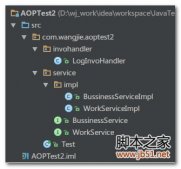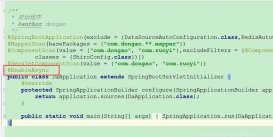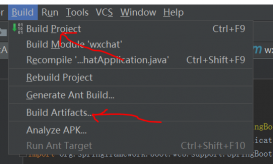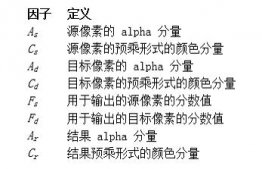本文实例讲述了java设计模式之桥接模式。分享给大家供大家参考,具体如下:
概念:
桥接模式(bridge pattern):将抽象部分与它的实现部分分离,使它们都可以独立地变化。
桥接模式将继承关系转换为关联关系,从而降低了类与类之间的耦合,减少了代码编写量。
什么情况下会用桥接模式?
简单的说就是我们在抽象对象的特征时,对象的特征属性又很抽象,不得不把属性再次抽象。
否则的话,具体子类的数量将会成几何增长,而且不易扩展。没办法维护现有代码。
举例,我们在抽象手机这二个对象时,它的几个属性,如操作系统,cpu,屏幕,运营商网络等都很复杂。我们不能简单的把这几个属性直接定义,必须再次抽象化。而具体的一个手机对象就是这些属性的组合,但不是简单的组合,属性需要实现自己作为属性的功能。在这样的设计下,代码的维护和扩展也就容易了。
注意:在说这个模式的时候,我不能保证说的和写得例子都是正确的,毕竟我也是新接触到,所有例子均基于与个人理解。
我认为的桥接模式说明图:
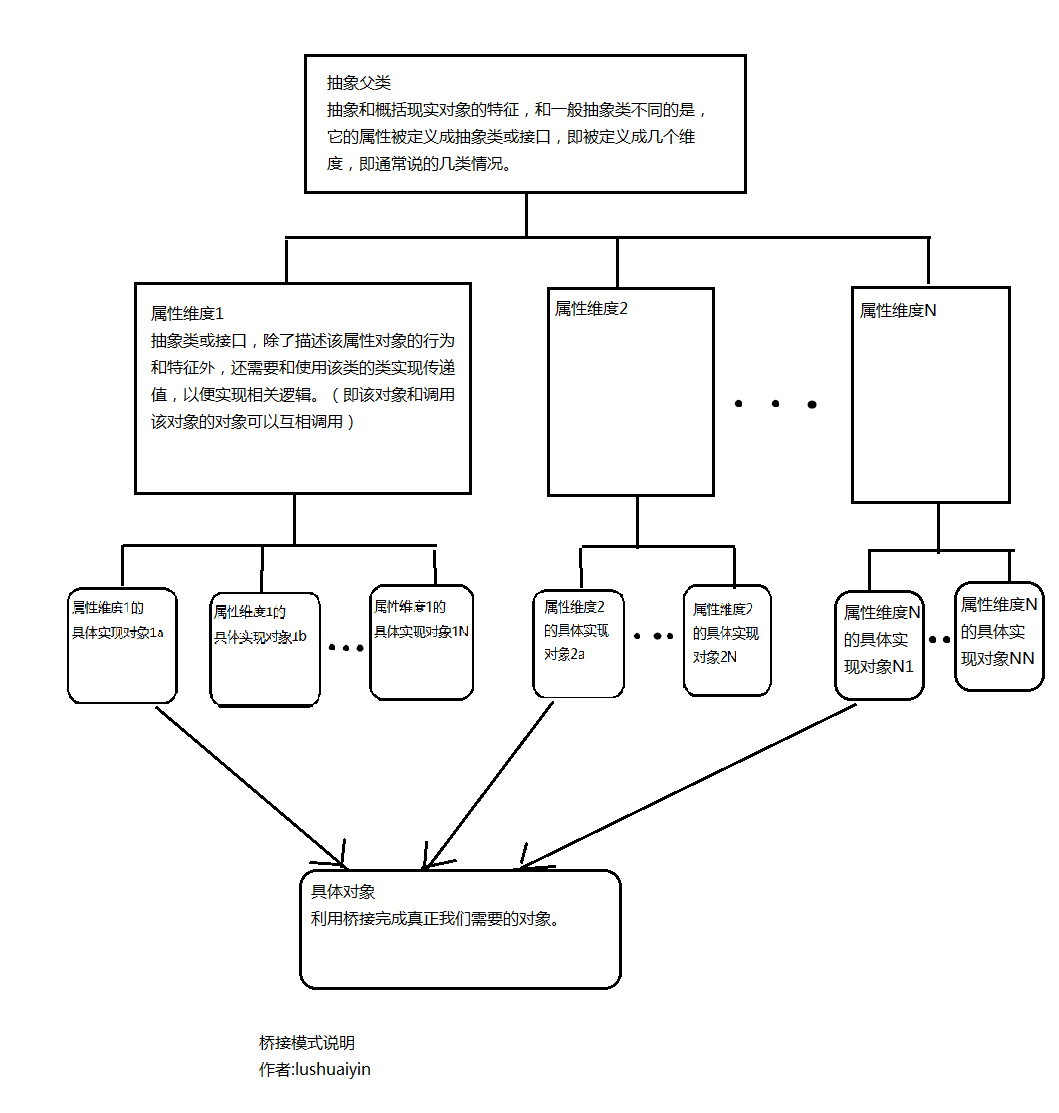
下面是例子:
1. 首先定义抽象类,抽象和描述对象的特征。
在对象的属性上划分维度,为了以后桥接和扩展。
|
1
2
3
4
5
6
7
8
9
10
11
12
13
14
15
16
17
18
19
20
21
22
23
24
25
26
27
28
29
30
31
32
|
package test.design.bridge;public abstract class cellphone { private string cellphonename; public cellphonesystem cellphonesystem; public cellphonecpu cellphonecpu; public void works(){ system.out.println("---------------------"); system.out.println("this cellphone is:"+this.getcellphonename()+",welcome to use. "); system.out.println("this cellphone detail infomation:"); system.out.println("系统类型:"+this.getcellphonesystem().getsystemname()); system.out.println("cpu型号:"+this.getcellphonecpu().getcpuname()); system.out.println("---------------------"); } public string getcellphonename() { return cellphonename; } public void setcellphonename(string cellphonename) { this.cellphonename = cellphonename; } public cellphonesystem getcellphonesystem() { return cellphonesystem; } public void setcellphonesystem(cellphonesystem cellphonesystem) { this.cellphonesystem = cellphonesystem; } public cellphonecpu getcellphonecpu() { return cellphonecpu; } public void setcellphonecpu(cellphonecpu cellphonecpu) { this.cellphonecpu = cellphonecpu; }} |
2. 属性维度的抽象。(可以使用接口定义,关键看你的具体功能)
|
1
2
3
4
5
6
7
8
9
10
11
12
13
14
15
16
17
18
19
20
21
22
23
24
25
26
27
|
package test.design.bridge;/** * 属性cpu被抽象成一个维度,为了以后扩展 * @author lushuaiyin * */public abstract class cellphonecpu { public cellphone cellphone; public string cpuname; public void cpuworks(){ system.out.println("i am cpu. my pattern is:"+this.getcpuname()); system.out.println("i am working for this cellphone:"+this.getcellphone().getcellphonename()); } public cellphone getcellphone() { return cellphone; } public void setcellphone(cellphone cellphone) { this.cellphone = cellphone; this.getcellphone().setcellphonecpu(this);// 装配(桥接,或者可以认为对象类与其属性类的传递) } public string getcpuname() { return cpuname; } public void setcpuname(string cpuname) { this.cpuname = cpuname; }} |
|
1
2
3
4
5
6
7
8
9
10
11
12
13
14
15
16
17
18
19
20
21
22
23
24
25
26
27
|
package test.design.bridge;/** * 属性操作系统被抽象成一个维度,为了以后扩展 * @author lushuaiyin * */public abstract class cellphonesystem { public cellphone cellphone; public string systemname; public void systemworks(){ system.out.println("i am "+this.getsystemname()+" system."); system.out.println("i am working for this cellphone:"+this.getcellphone().getcellphonename()); } public cellphone getcellphone() { return cellphone; } public void setcellphone(cellphone cellphone) { this.cellphone = cellphone; this.getcellphone().setcellphonesystem(this);// 装配(桥接,或者可以认为对象类与其属性类的传递) } public string getsystemname() { return systemname; } public void setsystemname(string systemname) { systemname = systemname; }} |
3. 具体的维度属性对象。
这里我们在操作系统属性和cpu属性上各定义2个具体对象,
|
1
2
3
|
package test.design.bridge;public class androidsystem extends cellphonesystem{} |
|
1
2
3
|
package test.design.bridge;public class iossystem extends cellphonesystem{} |
|
1
2
3
4
5
6
7
8
|
package test.design.bridge;/** * 双核cpu * @author administrator * */public class twocore extends cellphonecpu{} |
|
1
2
3
4
5
6
7
8
|
package test.design.bridge;/** * 四核cpu * @author administrator * */public class fourcore extends cellphonecpu{} |
4. 测试代码。
其中说了在需要扩展维度的情况下,怎么扩展的。
定义一个手机对象
|
1
2
3
4
|
package test.design.bridge;public class phone1 extends cellphone{ //具体对象的属性与逻辑} |
测试main函数
|
1
2
3
4
5
6
7
8
9
10
11
12
13
14
15
16
17
18
19
20
21
22
23
24
25
26
27
28
29
30
31
32
33
34
35
36
37
38
39
40
41
42
43
44
45
46
47
48
49
50
|
package test.design.bridge;public class testmain { /** * @param args */ public static void main(string[] args) { //任何一种具体的对象都是复杂多种属性的集合,在此可以看出桥接模式在构建对象时的灵活性 //产生一个具体对象1 cellphone p1=new phone1(); p1.setcellphonename(" iphone 6 "); cellphonesystem system1=new iossystem();//操作系统属性维度 system1.setsystemname("ios7"); system1.setcellphone(p1);//装配 system1.systemworks();//工作 /*装配说的简单点就是传值。因为我们把一个对象的属性按维度分开来了, 那么桥接的时候就必须相互传递对象。即对象类可以调用子属相类对象, 子属性类对象也可以调用该对象类. 关于这样的传值方式有多种,你可以在构造函数中传递,也可以在 调用具体逻辑方法时传递。这里我直接用set方法传递,只是为了更清楚. 如果某个属性维度是必须出现的,那就可以在抽象类的构造函数中传入*/ cellphonecpu cpu1=new twocore();//cpu属性维度 cpu1.setcpuname("a6"); cpu1.setcellphone(p1); cpu1.cpuworks(); p1.works();//最终整体对象功能 /* 桥接模式就是为了应对属性的扩展,在此说的属性必须是在维度确定的情况下。 比如,这里我们在定义手机对象时,确定两个属性维度:操作系统和cpu型号。 以后再这两个属性中,需要扩展时,就可以使用该模式。比如,一种新的cpu 型号出现了,那么我不用重新设计现在的代码,只要增添一个cpu类即可。 如果出现了新的维度属性,比如手机对象必须考虑屏幕大小。那桥接模式 在此就需要从根本上修改代码来了。 */ system.out.println("-----------分割---------------------------"); //在cpu维度上扩展。比如出现新型cpu:8核三星exynos 5 octa芯片". //三星手机推出了galaxy note ⅲ就是使用这种新型cpu. 写一个新类eightcore扩展cpu维度. //同时定义这个手机对象galaxy note ⅲ为phonegalaxynote3 cellphone note3=new phonegalaxynote3(); note3.setcellphonename("galaxy note ⅲ"); cellphonesystem system2=new androidsystem(); system2.setsystemname("android4"); system2.setcellphone(note3);//装配 system2.systemworks();//工作 cellphonecpu cpu2=new eightcore();//最新8核cpu cpu2.setcpuname("三星exynos 5 octa芯片"); cpu2.setcellphone(note3); cpu2.cpuworks(); note3.works();//三星galaxy note ⅲ新体验 }} |
如果需要扩展,定义新的维度属性
|
1
2
3
|
package test.design.bridge;public class eightcore extends cellphonecpu {} |
|
1
2
3
4
|
package test.design.bridge;public class phonegalaxynote3 extends cellphone{ //具体对象的属性与逻辑} |
测试打印;
|
1
2
3
4
5
6
7
8
9
10
11
12
13
14
15
16
17
18
19
20
21
|
i am ios7 system.i am working for this cellphone: iphone 6i am cpu. my pattern is:a6i am working for this cellphone: iphone 6---------------------this cellphone is: iphone 6 ,welcome to use.this cellphone detail infomation:系统类型:ios7cpu型号:a6--------------------------------分割---------------------------i am android4 system.i am working for this cellphone:galaxy note ⅲi am cpu. my pattern is:三星exynos 5 octa芯片i am working for this cellphone:galaxy note ⅲ---------------------this cellphone is:galaxy note ⅲ,welcome to use.this cellphone detail infomation:系统类型:android4cpu型号:三星exynos 5 octa芯片--------------------- |
希望本文所述对大家java程序设计有所帮助。
原文链接:http://blog.csdn.net/lushuaiyin/article/details/9345495


